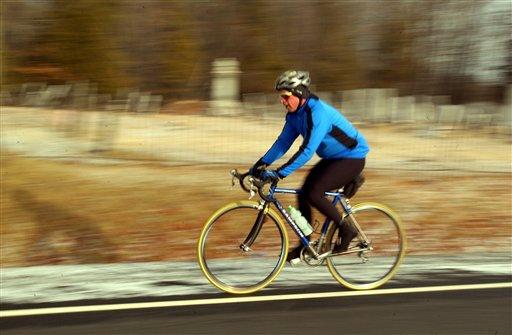 - Bob Irving downed so much water in the Half Ironman competition he made himself sick. During the last phase of the race, he vomited and had to walk most of the 13.1-mile run because his leg muscles cramped up. Irving had read about the dangers of overdrinking but figured it was all a myth. Now, after his bad experience in 1998, he avoids drinking excessively during long workouts. Three decades ago, the top warning sounded by race officials was dehydration. Athletes were told to constantly hydrate after several studies found a link between dehydration and a rise in body temperature, which can lead to heat stroke. But now researchers are taking a second look at the risks of drinking too much fluid during exercise. Hyponatremia, or water intoxication, was thrust into the spotlight after the back-to-back deaths of two female runners in 2002, including one who ran in the Boston Marathon. In both cases, the women drank excessive amounts of fluids. Hyponatremia happens when the body's sodium level falls below normal. People lose salt through their sweat, and overdrinking dilutes the sodium in the bloodstream, causing the brain to swell and push against the skull. Symptoms of hyponatremia include nausea, vomiting, weakness and, in severe cases, seizures, coma and death. Research has shown that exercise-related hyponatremia happens only during long periods of exertion, lasting four hours or longer, such as in marathons or triathlons, during which athletes are more likely to drink a lot. How much people should drink during prolonged exercise has touched off a debate among fitness experts. Experts agree hyponatremia is a serious problem, but some fear hyping the dangers of overdrinking will cause athletes to dehydrate themselves, and lead race officials to curb the number of water stops during long-distance competitions. Last year, race officials at the Houston Marathon halved the number of water stops after finding an unusually large number of hyponatremic runners at the medical tent in past years. Although runners were initially upset with the decision, doctors saw fewer hyponatremic cases, said Dr. Joseph Chorley, the marathon's assistant medical director. One of the leading international voices on hyponatremia is Tim Noakes, a sports science professor at the University of Cape Town in South Africa, who has published scores of articles on the perils of overdrinking. Noakes' advice is to drink only when thirsty, because the body will instinctively know when it needs water. But critics say his benchmark is impossible to measure. Studies have shown that hyponatremic victims are more likely to be female and athletes who have slower finishing times, but researchers do not know why. The American College of Sports Medicine acknowledges that hyponatremia is a concern, but fears that too much emphasis on overhydrating may cause athletes to ignore drinking altogether. "We shouldn't focus on the problems associated with overdrinking to the exclusion of the problems associated with not drinking enough fluids," said W. Larry Kenney, a professor of physiology and kinesiology at Penn State University and the immediate past president of ACSM. Last year, Kenney chaired a conference where medical experts reviewed current hydration guidelines. ACSM will publish a paper next spring that gives athletes guidance on how to prevent hyponatremia. Among the new recommendations will be to drink only when thirsty and to drink as much as you sweat. The way to know whether you drank too much during a long training routine is if your weight afterward is more than it was before your exercise. Other groups such as the American Running Association recommend that athletes incorporate salty foods like pretzels into their pre-race meal. The International Marathon Medical Directors' Association urges athletes to drink no more than one cup of fluid every 20 minutes during a race. |